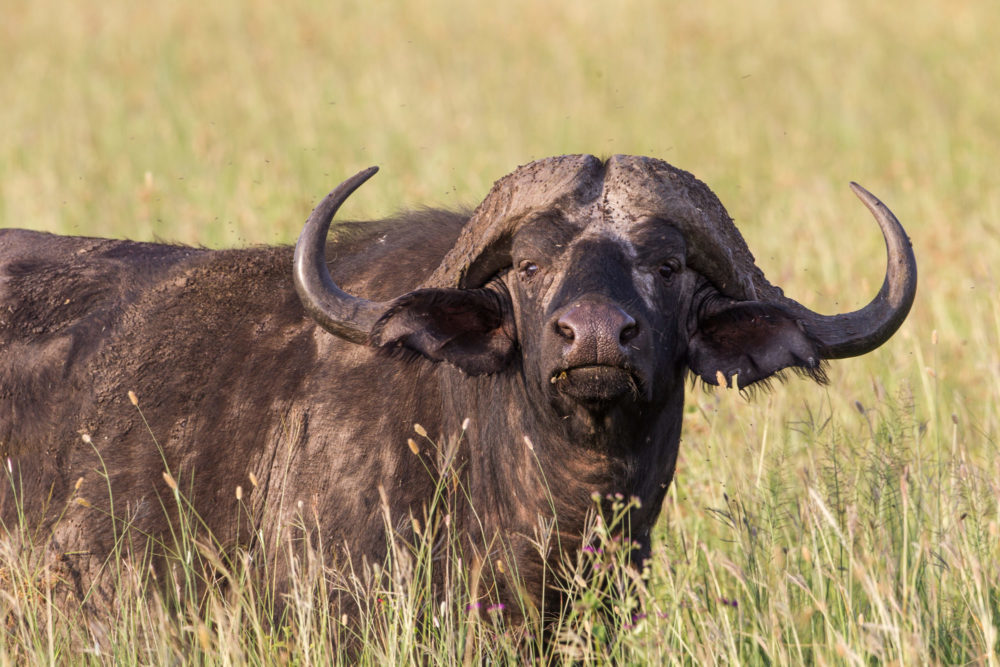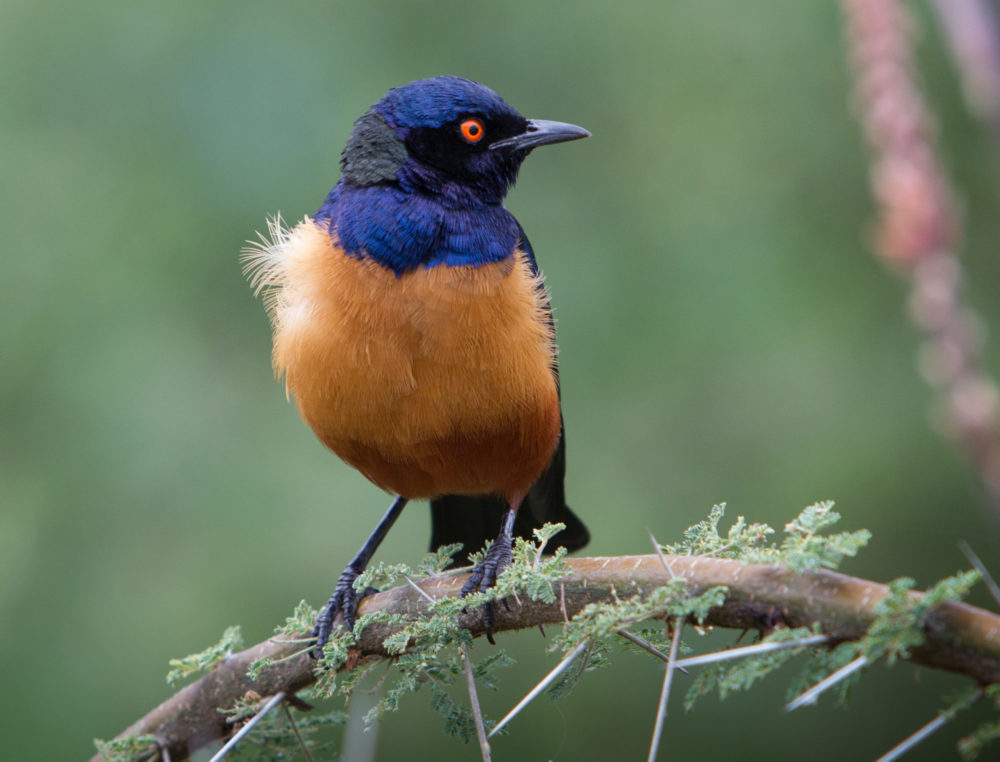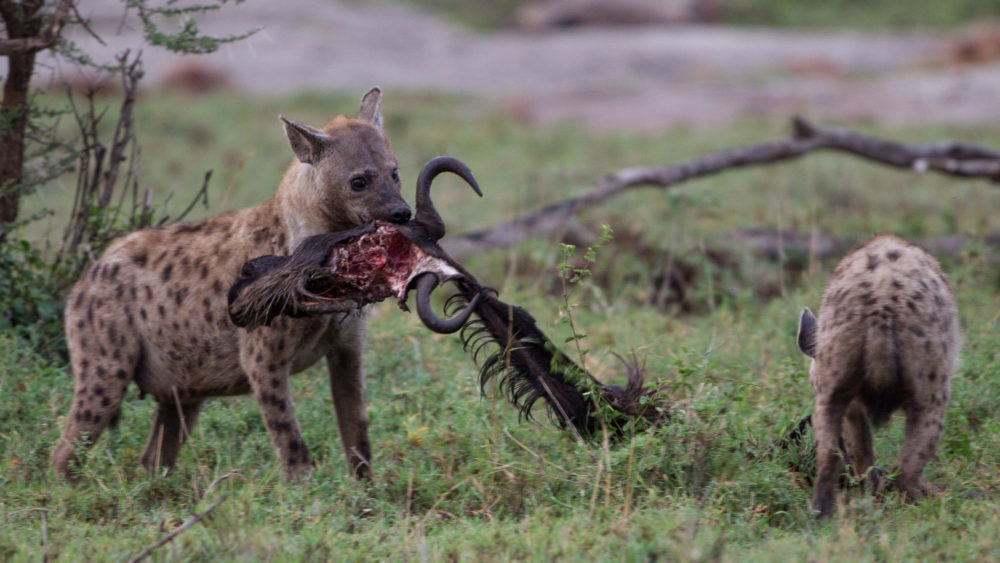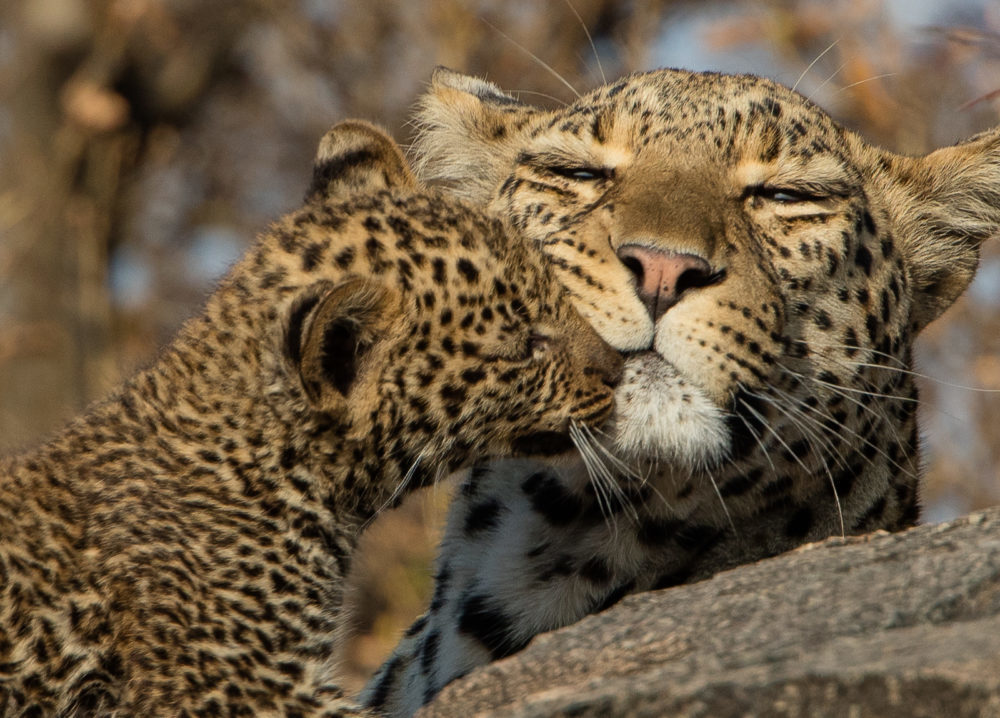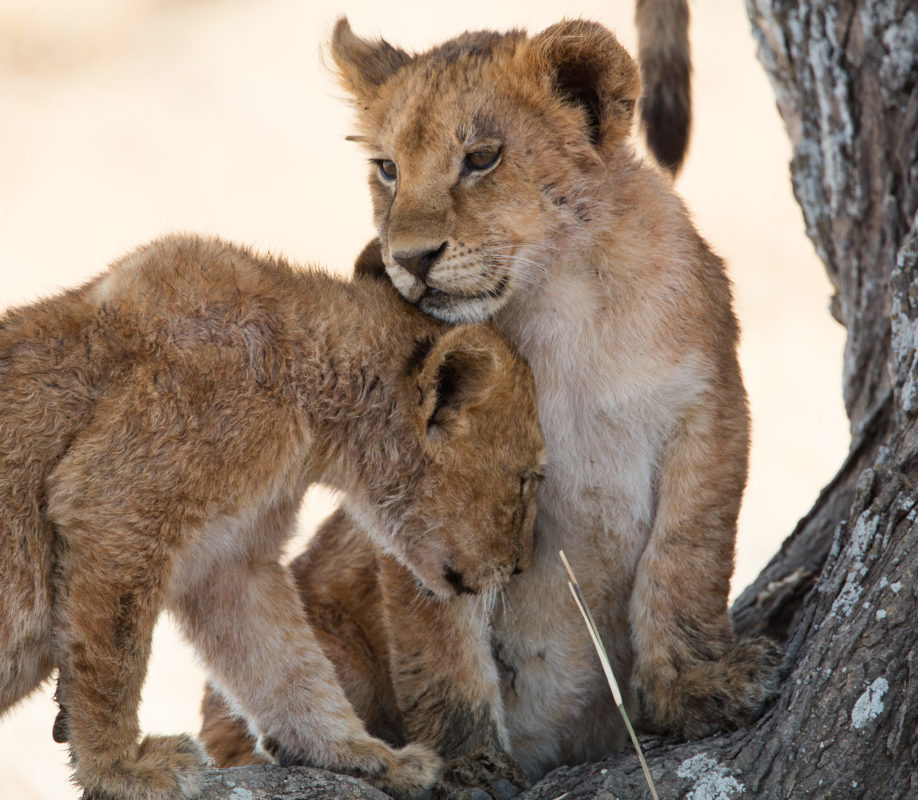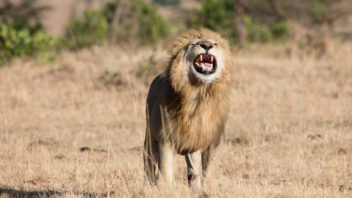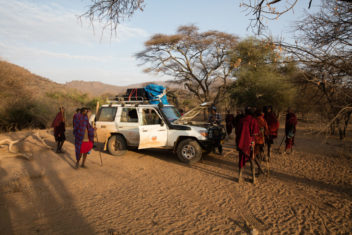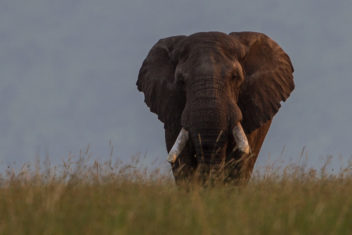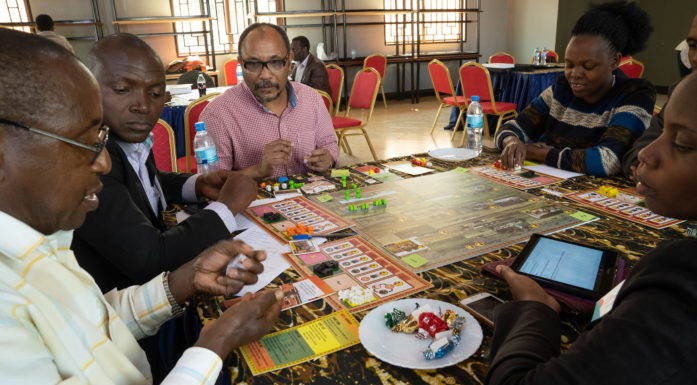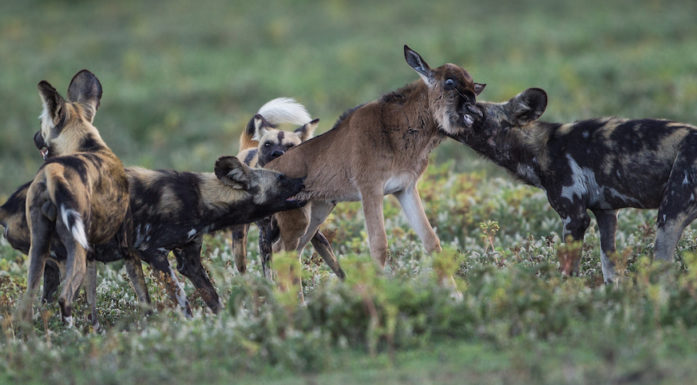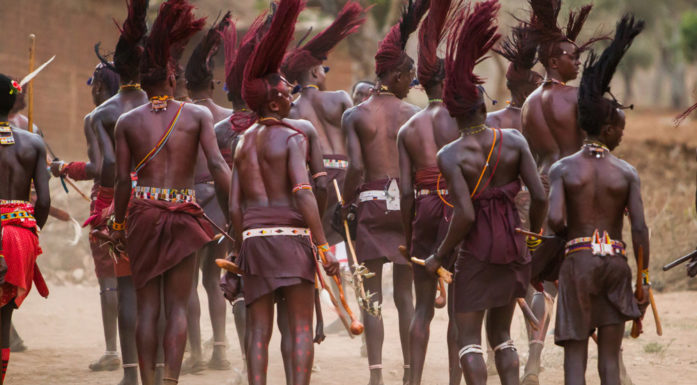How can people and predators coexist?
Predators and people have lived side by side since time immemorial in the Serengeti National Park region in Tanzania. But strong population growth is leading to greater conflicts.
The screams from a wildebeest calf in distress blend with the roar of lions that reverberate across the savannah. Male lions that live nearby prick their ears and head out to battle their rivals for the potential prey.
Hyenas and wild dogs come slinking in on their heels to check if they can scavenge any leftovers. Vultures sail in from the sky on the same errand.
Soon after, herders from the Sonjo (or Batemi, as they call themselves) people and their shepherd dogs come running to check if their cattle are in danger. The herders – should they have a direct encounter with wild animals – are armed with spears and spear tips inserted with a toxic poison that takes effect within minutes. The poison is extracted from the bark of a tree called “mroda” in the local language, and resembles the drug Curacit that paralyses the respiratory system.
- You might also like: Saving Africa’s wily wild dogs — with pee
Nervous mood
When the lions, jackals, hyenas and the Sonjo herders arrive at the scene where they heard the lions, confusion arises. Where in the world are the roaring lions? The approaching lions wander around, annoyed and looking for their rivals.
The herders, on the other hand, break out laughing when they realize that the lion roars are coming from a loudspeaker next to a jeep with some nervous people sitting inside. They forgot their sound equipment outside the car and were waiting for the real lions to leave the area so they could turn off the recording and end the drama.
Researchers are using the sound playbacks for a research study that is part of the large EU AfricanBioServices project involving almost 100 scientists from Kenya, Tanzania, Denmark, Norway, the Netherlands, Germany, and Scotland. Eivin Røskaft, Professor of Biology at NTNU, is leading the research project in the Serengeti-Mara region.
- You might also like: Serengeti road divides biologists
Side by side
First a bit of background: The Maasai and Sonjo peoples are ethnic groups that live right next to the Serengeti National Park and both have livestock that they tend carefully. The Maasai and Sonjo have lived alongside the local predators from time immemorial, and have had to learn techniques and methods to avoid predator attacks.
Franco Mbise was able to see their lifestyle close up when he worked at the Tanzania Wildlife Research Institute, and was fascinated by this coexistence. Now Mbise is a PhD fellow at NTNU and is researching what is needed for this special human-predator relationship – a coexistence that is becoming increasingly challenging – to work.
- You might also like: Serengeti Park disappearing
Getting crowded
Rural areas are shrinking due to the large human population growth outside the Serengeti in recent decades, resulting in humans and animals living closer and closer together.
“In the Serengeti, humans and carnivores have no choice but to live alongside each other,” says Mbise, “so measures are needed to curb predator attacks and enable continued coexistence.”
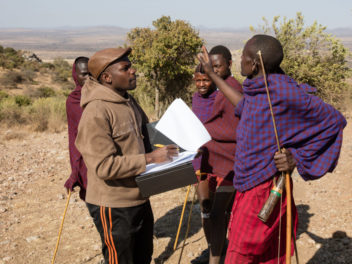
NTNU PhD candidate Franco Mbrise interviews shepherds as part of his research project. Photo: Per Harald Olsen, NTNU
He is studying life and ecosystems in three Maasai villages and three Sonjo villages to survey the situation and look at possible strategies.
Counting predators
The first objective of the research project is to estimate the number of predators and to map the frequency of encounters between humans and predators. That is why the researchers set up playbacks so predators would think that food is in the works. The researcher charts the number of lions, hyenas, jackals, vultures and birds of prey that flock to the scene. The counting occurs both through direct observations, and through soil samples that are collected and analysed for DNA traces.
“Residents of the six villages responded to questionnaire surveys and reported high numbers of predators. Now we’re checking whether our mapping matches the frequency of attacks reported by residents,” said Mbise.
Possible measures
Secondly, the research project is assessing what measures can be implemented to ensure continued human-predator coexistence.
“It would be good if these communities received help to construct better corrals, with fence netting and flashing lights at night. This would help keep predators outside the enclosures. The herders also need trained dogs that can help alert villagers and scare away predators,” said Mbise.
Another possible measure is to change which areas people use as grazing areas for their livestock.
The biggest threat
Although predators pose a major threat to livestock, disease is by far the greater threat.
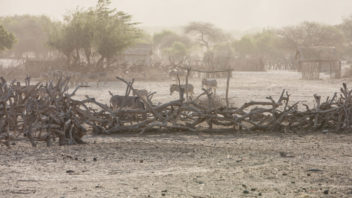
Better enclosures are one of a number of measures that can help protect livestock. Photo: Per Harald Olsen, NTNU
“Loss of domestic animals due to illness is actually ten times greater than predator loss,” said Mbise.
He has investigated the use of chemicals and medicine to prevent disease in the livestock herd.
He has found that “immunity to disease was strengthened through a chemo-prophylactic program we tested on livestock.”
More extensive investigations and assessments remain to be done in this area.
You can read more about Franco Mbise’s research and see more pictures.
Fewer predators
The number of predators has declined sharply in recent years in parallel with an acute rise in predator conflicts. Researcher Frode Fossøy at NTNU’s Department of Biology, who is also working on the predator problem in the Serengeti, looks at the reasons that the predator population has declined.
“We’re comparing the figures collected in current studies with figures from a similar study published in 2003. We want to investigate how the populations of lions, hyenas, wild dogs, jackals, birds of prey and vultures have changed over the past decade. Looking at our data, we can already see that these animal populations have decreased significantly,” says Fossøy.
Killing with poison
Vultures in particular reflect this drop in numbers. This scavenger needs large areas in order to obtain enough food. Loss of habitat and hunting areas due to the expanding human population is therefore a major problem.
“But the biggest problem today is poison. When lions kill and eat local farmers’ cows and goats, farmers often respond by setting out dead goats that have been injected with poison (diclofenac) to kill the lions. The problem is that the vultures often arrive on the scene first, and just one such case can kill over 100 vultures,” says Fossøy.
“In addition, poachers actively use this poisoning method to avoid attracting vultures after illegally shooting elephants and rhinoceros. Park guards use the influx of vultures to detect illegal hunters, and so these poachers want to poison as many vultures as possible,” says Fossøy.
In large parts of Africa where illegal hunting is widespread, this poisoning method has led to a huge decline in vulture populations.
Both Frode Fossøy and Franco Mbise are part of the EU AfricanBioServices project led by NTNU.
